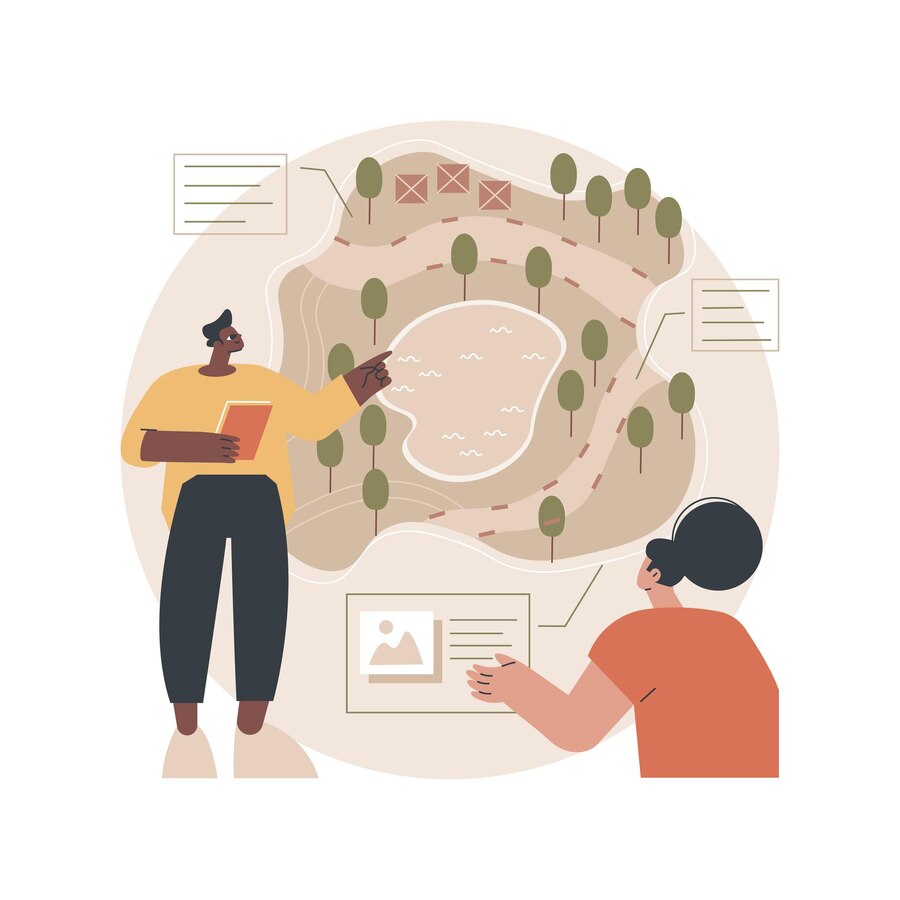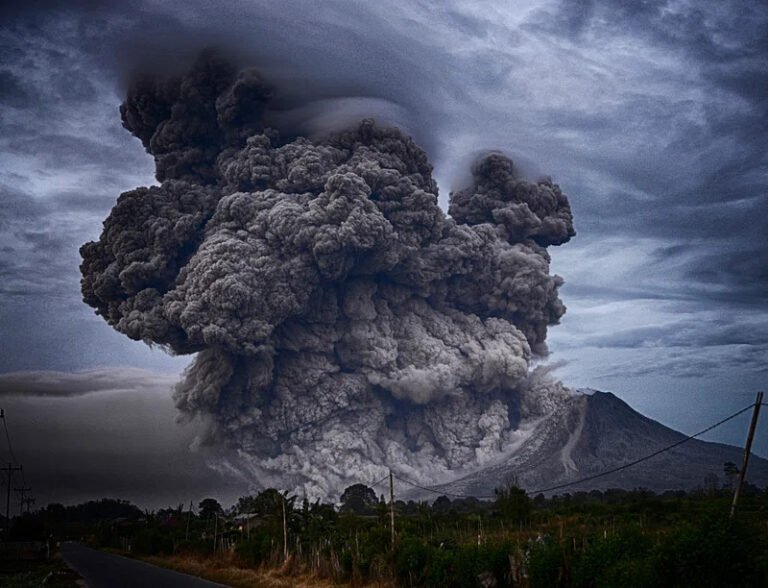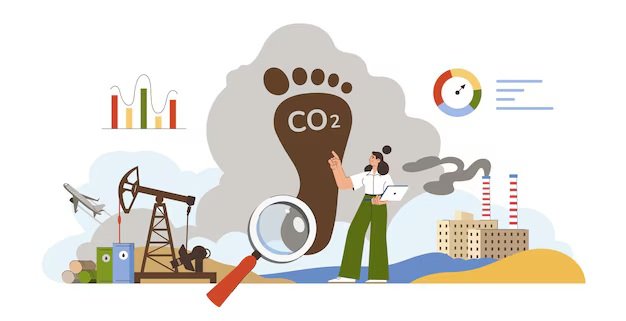10 Successful Habitat Restoration Projects That Revived Ecosystems
Nature has an incredible ability to heal, but sometimes, it needs a helping hand. Habitat restoration is not just about planting trees or cleaning up polluted rivers. It’s about breathing life back into damaged ecosystems, bringing back lost species, and ensuring that future generations inherit a thriving planet.
Across the globe, scientists, conservationists, and local communities are working together to restore forests, wetlands, coral reefs, and grasslands that have suffered from deforestation, pollution, and climate change. Their efforts are not just about fixing what’s broken; they’re about rebuilding the delicate balance that allows wildlife and people to coexist in harmony. These projects are stories of hope, resilience, and the power of human dedication to reversing environmental damage.

In This Article
- 1. The Great Barrier Reef Restoration (Australia)
- 2. Yellowstone National Park Wolf Reintroduction (USA)
- 3. Loess Plateau Restoration (China)
- 4. Elwha River Dam Removal (USA)
- 5. Costa Rica’s Rainforest Regeneration
- 6. The Thames River Cleanup (UK)
- 7. New Zealand’s Predator-Free 2050 Project
- 8. South Korea’s Cheonggyecheon Stream Restoration
- 9. Kenya’s Green Belt Movement
- 10. The Oostvaardersplassen Wetland (Netherlands)
- Conclusion: What Can We Learn?
1. The Great Barrier Reef Restoration (Australia)
Bringing Coral Reefs Back to Life
The Great Barrier Reef, one of the most biodiverse ecosystems on the planet, has suffered severe coral bleaching due to rising sea temperatures. Aerial surveys have revealed that 54% of 641 observed reefs experienced bleaching, affecting nearly 41% of offshore reefs and 72% of inshore reefs, according to the Australian Institute of Marine Science.
In response, scientists and conservationists launched the Reef Restoration and Adaptation Program (RRAP). This ambitious initiative employs innovative techniques to rehabilitate the reef and strengthen its resilience against climate change.
Key Insights:
- Coral Seeding: One of RRAP’s primary strategies involves cultivating resilient corals in nurseries and transplanting them onto damaged reefs. This method has shown promise in enhancing coral cover and accelerating reef recovery.
- Genetic Adaptation: Researchers are exploring selective breeding programs to develop corals better suited to warmer ocean conditions. By assisting the evolutionary adaptation of reef species, the goal is to minimise the need for ongoing intervention.
- Local Involvement: Indigenous communities play a crucial role in monitoring and conserving the reef. Their traditional knowledge, combined with scientific approaches, enhances the effectiveness of restoration efforts and fosters a deeper connection to the environment.
The results so far are encouraging. Areas once devastated by bleaching are showing signs of revival, marine biodiversity is returning, and the reef is proving more resilient than many feared.
Expert Quote:
Dr. Emma Camp, a renowned coral biologist, has expressed deep concern about the future of the Great Barrier Reef, emphasizing that “the decisions we make now can help ensure its future.” Her dedication to preserving coral reefs is driven by a desire to ensure that future generations can experience these natural wonders.
2. Yellowstone National Park Wolf Reintroduction (USA)
Restoring the Balance of an Ecosystem
Yellowstone National Park’s ecosystem was out of balance for much of the 20th century. When wolves were eliminated from the park in the 1920s, elk populations exploded. With no natural predators keeping them in check, elk overgrazed willows, aspens, and other vegetation, damaging riverbanks and disrupting the entire food chain.
In 1995, scientists and conservationists made a bold move—they reintroduced grey wolves to Yellowstone. The impact was incredible. Wolves naturally controlled the elk population, leading to a ripple effect known as a trophic cascade.
Key Impacts:
Regrowth of Willows & Aspens: With fewer elk overgrazing, willows and aspens grew back, creating better habitats for birds and beavers. Beavers, in turn, built dams that helped regulate water flow, benefiting fish and other aquatic life.
Riverbank Stability: Riverbanks became stronger as plant roots held the soil in place, reducing erosion. This simple act of reintroducing a predator helped stabilise the park’s entire ecosystem.
Biodiversity Boom: The presence of wolves helped balance the predator-prey dynamic, benefiting various species and restoring ecological diversity.
Case Study: For over 30 years, the Yellowstone Wolf Project has tracked these changes, proving that wolves play a vital role in nature. This effort stands as one of the greatest conservation success stories, showing how one species can help heal an entire landscape.
3. Loess Plateau Restoration (China)
Transforming a Barren Land into a Green Haven
The Loess Plateau in China, once a symbol of ecological devastation, underwent a remarkable transformation that revitalised both its environment and the livelihoods of millions. Decades of overgrazing, deforestation, and unsustainable farming had stripped the land of vegetation, leading to severe soil erosion and plunging local communities into poverty. By the 1990s, the region faced one of the highest erosion rates globally, with declining agricultural productivity exacerbating the hardships of its inhabitants.
Techniques Used:
- Terracing & Reforestation: Engineers and farmers collaborated to carve terraces into the hillsides, effectively slowing water runoff and allowing soil to rebuild. Reforestation programs introduced native and drought-resistant species, stabilising the terrain and promoting biodiversity.
- Banning Grazing: Authorities restricted free-range grazing, enabling natural vegetation to recover. This not only controlled soil erosion but also improved water retention in the region.
- Community Engagement: The Chinese government worked closely with local farmers, offering incentives to adopt sustainable agricultural practices. Farmers were encouraged to shift from unsustainable farming to tree planting and agroforestry.
Measurable Success:
The restoration project yielded significant environmental and socio-economic benefits:
- Vegetation Cover: The project increased vegetative cover by 25%, significantly reducing erosion and restoring biodiversity.
- Soil Erosion Reduction: Vegetation restoration was the dominant factor in reducing soil loss rates, with a contribution of more than 78%, according to a study.
- Land Restoration: Over 2.5 million hectares of land were rehabilitated, enhancing agricultural productivity and improving local livelihoods.
According to the World Bank, this project not only restored the environment but also lifted 2.5 million people out of poverty by promoting sustainable agriculture and improving ecosystem services.
Expert Insight:
Dr. Liu Jian, UNEP Chief Scientist, remarked, “The Loess Plateau restoration is a model for large-scale ecosystem recovery. It shows that with the right policies and community involvement, degraded lands can be transformed.”
Learn More: What Is Habitat Loss and Destruction?
4. Elwha River Dam Removal (USA)
Freeing a River to Restore an Ecosystem
For over a century, two massive dams blocked the Elwha River in Washington State, preventing salmon from migrating upstream. The disruption altered the entire ecosystem, impacting wildlife and Indigenous communities who relied on the fish for sustenance and cultural practices. In 2011, the largest dam removal project in U.S. history began, setting the river free for the first time in a hundred years.
Restoration Impact:
- Salmon Return: Within a year of the dam removal, Chinook salmon were observed migrating upstream to spawn. By 2024, researchers from NOAA reported a significant increase in salmon populations compared to pre-removal levels.
- Sediment Redistribution: The removal released millions of cubic yards of trapped sediment, naturally restoring riverbanks, beaches, and estuaries, thereby improving habitats for various species.
- Biodiversity Surge: With the return of salmon, predators like bears, eagles, and otters have rebounded. Native vegetation is also flourishing, stabilising the riverbanks and improving water quality.
Before and After Data
Before and After Data:
| Year | Salmon Population Estimate | Sediment Flow Restored (%) |
|---|---|---|
| 2010 | ~1,000 | 0 |
| 2015 | ~4,000 | 50 |
| 2024 | ~12,000+ | 100 |
The Elwha restoration project exemplifies the power of removing human-made barriers to allow nature to heal. The Lower Elwha Klallam Tribe played a pivotal role in advocating for the dam removal and are now witnessing the revival of their traditional way of life.
Dr. Sarah Morley, a research ecologist at NOAA Fisheries, has been actively involved in studying the Elwha River’s recovery.
5. Costa Rica’s Rainforest Regeneration
From Cattle Pasture to Thriving Jungle
In the latter half of the 20th century, Costa Rica faced extensive deforestation as vast tracts of rainforest were cleared for agriculture and cattle ranching. This led to significant biodiversity loss and environmental degradation. Recognising the urgent need for change, the nation implemented a series of innovative strategies that transformed it into a global model for rainforest restoration.
Success Factors:
- Payment for Ecosystem Services (PES): Introduced by the Forestry Law in 1996, this program offers financial incentives to landowners for conserving and restoring forests. By compensating farmers and landowners, the initiative promotes sustainable land use practices. To date, over 18,000 families have benefited, with more than 1.3 million hectares under PES contracts.
- Ecotourism: Leveraging its rich biodiversity, Costa Rica invested in ecotourism, attracting visitors worldwide. The revenue generated has been reinvested into conservation projects, creating a sustainable cycle that benefits both the environment and local communities. This approach has been instrumental in increasing forest cover from 24.4% in 1985 to over 50% by 2011.
- Legal Protection: The government enacted strict anti-deforestation laws supported by robust enforcement mechanisms. These regulations deter illegal logging and promote responsible land management. The PES program, as part of this legal framework, has played a significant role in conserving nearly one million hectares of forest.
These combined efforts have not only restored Costa Rica’s rainforests but also revitalised its economy and positioned the country as a leader in sustainable development.
6. The Thames River Cleanup (UK)
Reviving One of the World’s Most Polluted Rivers
Once declared biologically dead in 1957 due to severe pollution, the River Thames in the United Kingdom has undergone a remarkable transformation, emerging as a testament to effective environmental restoration.
Achievements:
- Water Quality Improvement: Over the past four decades, concerted efforts in wastewater treatment and agricultural management have led to an approximate 80% reduction in phosphorus loads, significantly enhancing water quality.
- Wildlife Return: Improved water conditions have facilitated the return of diverse wildlife. The tidal Thames now supports numerous species of fish, birds, and other animals, reflecting the river’s ecological recovery.
- Public Engagement: Citizen-led initiatives and clean-up efforts have played a crucial role in the river’s revival. Public awareness campaigns and community involvement have been instrumental in sustaining the momentum for a cleaner Thames.
Ongoing Challenges:
Despite these successes, challenges remain. Recent reports indicate ongoing pollution issues, with concerns about sewage discharges affecting water quality. For instance, in 2024, Thames Water discharged raw sewage into rivers for nearly 300,000 hours, a 50% increase from the previous year. Environmental advocates continue to push for stricter regulations and infrastructure improvements to address these challenges.
7. New Zealand’s Predator-Free 2050 Project
Protecting Native Wildlife by Eliminating Invasive Species
New Zealand is home to some of the world’s most unique bird species, like the kiwi and the kakapo. However, these native creatures have faced severe threats from invasive predators such as rats and stoats, which were introduced to the islands over the years. These predators have caused drastic declines in native bird populations, pushing some to the brink of extinction. In response, the New Zealand government launched the ambitious Predator-Free 2050 project, aiming to eliminate these invasive species and restore the country’s rich biodiversity.
Key Strategies:
- Innovative Traps & Biosecurity: Developing advanced trapping methods and strengthening biosecurity measures to prevent further introductions of invasive species.
- Community-Led Eradication Programs: Empowering local communities, including whānau, hapū, and iwi, to lead eradication efforts, fostering a collective sense of responsibility and action.
- DNA Technology for Early Detection: Utilising cutting-edge DNA technologies to detect and respond to invasive species before they can establish significant populations.
Early Results:
The project has reported significant reductions in predator numbers, leading to encouraging signs of recovery in native bird populations. For instance, in areas where intensive predator control has been implemented, kiwi hatching rates have increased to 50-60%, compared to the 5-10% survival rate without intervention. Additionally, some regions have reported annual kiwi population growth of up to 8%.
While the Predator-Free 2050 project is ongoing, these early successes demonstrate the effectiveness of the strategies employed and offer hope for the future of New Zealand’s native wildlife.
8. South Korea’s Cheonggyecheon Stream Restoration
Urban Renewal Meets Ecological Success
For decades, the Cheonggyecheon Stream was hidden beneath a massive elevated highway that accommodated over 160,000 vehicles daily. The area was congested and polluted, and lacked green spaces for residents. Recognising the potential for revitalisation, city officials embarked on an ambitious project to remove the highway and restore the stream. Completed in 2005, the Cheonggyecheon Stream, once buried beneath a bustling roadway, has been restored to its former glory, offering both ecological and social benefits to the city. It has since become a global model for urban renewal.
Outcomes:
- Temperature Reduction: The restoration led to a noticeable decrease in urban temperatures. Studies showed that areas along the stream experienced temperatures 3.3°C to 5.9°C cooler than nearby streets, mitigating the urban heat island effect.
- Wildlife Recovery: Biodiversity flourished following the restoration. Between 2003 and 2008, the number of plant species increased from 62 to 308, fish species from 4 to 25, and bird species from 6 to 36. This 639% increase in overall biodiversity highlighted the project’s ecological success.
- Economic Benefits: The revitalised area attracted both tourists and businesses. An average of 64,000 visitors frequent the stream daily, including over 1,400 foreign tourists, contributing approximately $1.9 million USD in visitor spending. Additionally, land prices within 50 meters of the restoration project increased by 30-50%, surpassing property value increases in other parts of Seoul.
Learn More: How Does Hunting Support Conservation Efforts?
9. Kenya’s Green Belt Movement
Women-Led Reforestation
Imagine a group of determined women coming together to heal their land and uplift their communities. This vision became a reality in 1977 when Professor Wangari Maathai founded the Green Belt Movement (GBM) in Kenya. What started as a simple tree-planting initiative has blossomed into a powerful force for environmental conservation and women’s empowerment.
Over the years, these dedicated women have planted more than 51 million trees across Kenya’s landscapes, including vital areas like the highlands of Mt. Kenya, the Aberdares, and the Mau Complex. These efforts have revitalised degraded watersheds and restored essential water catchments, bringing life back to the land.
Impact:
- Carbon Sequestration: Each tree planted acts as a natural sponge, absorbing carbon dioxide from the atmosphere. Collectively, these millions of trees play a significant role in mitigating climate change by reducing the overall carbon footprint.
- Economic Empowerment for Women: GBM doesn’t just focus on the environment; it also uplifts the women involved. For every tree seedling that thrives, women receive a small financial compensation. This income has enabled many to provide for their families, pay for their children’s education, and even start additional income-generating activities. For instance, the College Tree Nursery Group used their earnings to purchase an oven, leading to a successful baking business.
- Soil and Water Conservation: The roots of these trees anchor the soil, preventing erosion, while their canopies reduce the impact of rainwater on the ground. This natural protection ensures that the soil remains fertile and that water sources are replenished and maintained, benefiting both agriculture and local water supplies.
The Green Belt Movement stands as a testament to the power of grassroots initiatives. Through the simple act of planting trees, Kenyan women have transformed their environment, bolstered their economies, and fostered a legacy of sustainability for future generations.
10. The Oostvaardersplassen Wetland (Netherlands)
Rewilding Success Story
In the 1960s, the Dutch government reclaimed land from the sea for industrial use, but nature took a different course. Over time, the area naturally transformed into a rich wetland ecosystem. Recognising its potential, conservationists introduced species like Konik horses, Heck cattle, and red deer to mimic the grazing patterns of ancient megafauna. Today, Oostvaardersplassen is a thriving habitat for thousands of birds, deer, and wild horses, demonstrating the incredible power of passive restoration.
Key Factors:
- Climate Adaptation Strategies: The Oostvaardersplassen serves as a natural buffer against climate change impacts. Wetlands like this absorb excess rainfall, reducing flood risks, and act as carbon sinks, capturing and storing carbon dioxide.
- Minimal Human Intervention: By allowing nature to take its course with limited interference, the area developed into a self-sustaining ecosystem. This hands-off approach demonstrated that given space and time, nature can restore itself in remarkable ways.
- Natural Grazing Management: The introduction of large herbivores played a crucial role in maintaining the landscape. Their grazing prevented the overgrowth of vegetation, promoting a diverse habitat that supports various species. As of 2016, the population had grown to over 5,300 animals, including Konik horses, Heck cattle, and red deer.
Conclusion: What Can We Learn?
Each of these restoration projects offers valuable lessons in conservation, community involvement, and policy effectiveness. If there’s one takeaway, it’s that nature has an incredible ability to heal, when given the chance.
Actionable Advice:
- Support local conservation initiatives.
- Advocate for sustainable policies.
- Participate in citizen science projects.
- Reduce personal environmental impact.
By investing in habitat restoration, we ensure a thriving planet for future generations.







